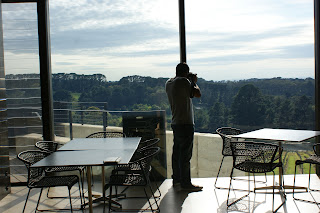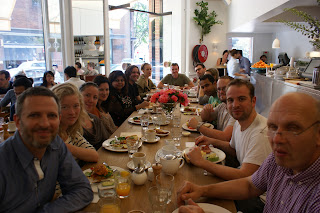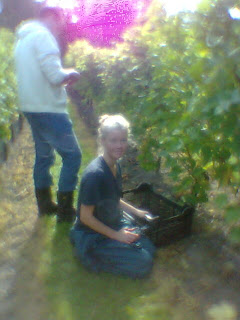Before you go in to a rage in case you are in the business your self, please listen.
Anyone who's worked in a busy restaurant intimately knows the physical and psychological stress that comes with it. I'd say even more so if you happen to be a part of the chef team. It is truly a skill to handle this environment on any level.
Yesterday we had perhaps the busiest night since I started working at a local hotel. They've certainly had busier times but it cemented a few things for me. As it got a bit pressurised during a certain hour when private functions and public restaurant all ordered food at the same time it's easy as part of front of house staff to get high strung and severely stressed, especially since you have to deal with the kitchens frustrations as well as any unhappy guests. But you don't have to.
When it comes to guests I have a golden rule that is more or less full proof:
- The most important thing as a waiter is to be your self. By being your self I mean caring. Listen, treat every person/table the way they want to be treated. It may be a few business people who don't want charm and won't want to be disturbed. Or it may be a couple, new to town who are quite talkative and curious about both you and the surrounding area. Feel your way. If it's a bigger group usually they have enough to talk about and you simply act as a preschool teacher and keep it organised and clean.
As I mentioned, last night was fairly busy. Well busier than normal (since working as part of the sommelier team in a Michelin starred restaurant in London I know what busy is and more importantly - feels like). But personally the more busy it gets, the more calmer I feel.
That comes from experience I reckon.
Besides the technicality to service my secret is to win your guest over as soon as possible. Make them care about you. If they care about you they won't mind waiting a little extra for their food or even if you make a full on mistake. Just be honest and sincerely apologies. What people get angry with is the management or the company but if they like you they'll have much more sympathy. You become part of their evening. As humans I believe it's easier to get angry with someone or something that you haven't made a connection with. So waiters, make a connection and your guests will be on your side for the rest of the evening. If you know the food is going to be late due to a pressurised kitchen inform the table in question and apologies before hand. They will appreciate your sincerity and can only get positively surprised from now on. It is very important in that instance to lower expectations and over deliver.
Some may disagree with me here but I believe it is more important to dare to take enough time with each table rather than run around trying to be efficient (if you're experienced enough you can do both). If they see you are being caring and skilful you've won them over. If you run around like a headless chicken and do less good all over - no one feel attended to, no one has recognised you and you'll end up having a whole unhappy room or station.
Back to the initial statement.
Restaurant service is most certainly a great, great skill. I've worked hard learning to get better and better, but it is important to remember that it's people you are dealing with. Someone like you. People who are out to have a nice time. No one is gonna get hurt if they wait a little extra for their food. You can always keep them entertained or give them a little something on the house. There is no need to get stressed out due to a pressurised kitchen screaming at you. Understand their situation and the incredibly hard work they do, don't take it personally. Any issues should be dealt with after service, not in.
In my opinion - quality and human relations are both far more important than impersonal service and quantity.
x Charlotte



















































